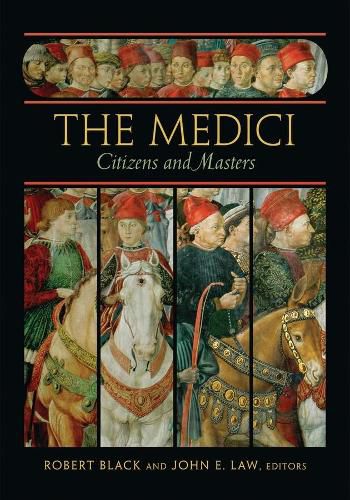Readings Newsletter
Become a Readings Member to make your shopping experience even easier.
Sign in or sign up for free!
You’re not far away from qualifying for FREE standard shipping within Australia
You’ve qualified for FREE standard shipping within Australia
The cart is loading…






The Medici controlled fifteenth-century Florence. Other Italian rulers treated Lorenzo the Magnificent (1449-1492) as an equal. To his close associates, he was the boss ( master of the workshop ). But Lorenzo liked to say that he was just another Florentine citizen. Were the Medici like the kings, princes, and despots of contemporary Italy? Or were they just powerful citizens? The Medici: Citizens and Masters offers a novel, comparative approach to answering these questions. It sets Medici rule against princely states such as Milan and Ferrara. It asks how much the Medici changed Florence and contrasts their supremacy with earlier Florentine regimes. Its contributors take diverse perspectives, focusing on politics, political thought, social history, economic policy, religion and the church, humanism, intellectual history, Italian literature, theater, festivals, music, imagery, iconography, architecture, historiography, and marriage. The book will interest students of history, Renaissance studies, Italian literature, and art history as well as anyone keen to learn about one of history’s most colorful, influential, and puzzling families.
$9.00 standard shipping within Australia
FREE standard shipping within Australia for orders over $100.00
Express & International shipping calculated at checkout
The Medici controlled fifteenth-century Florence. Other Italian rulers treated Lorenzo the Magnificent (1449-1492) as an equal. To his close associates, he was the boss ( master of the workshop ). But Lorenzo liked to say that he was just another Florentine citizen. Were the Medici like the kings, princes, and despots of contemporary Italy? Or were they just powerful citizens? The Medici: Citizens and Masters offers a novel, comparative approach to answering these questions. It sets Medici rule against princely states such as Milan and Ferrara. It asks how much the Medici changed Florence and contrasts their supremacy with earlier Florentine regimes. Its contributors take diverse perspectives, focusing on politics, political thought, social history, economic policy, religion and the church, humanism, intellectual history, Italian literature, theater, festivals, music, imagery, iconography, architecture, historiography, and marriage. The book will interest students of history, Renaissance studies, Italian literature, and art history as well as anyone keen to learn about one of history’s most colorful, influential, and puzzling families.